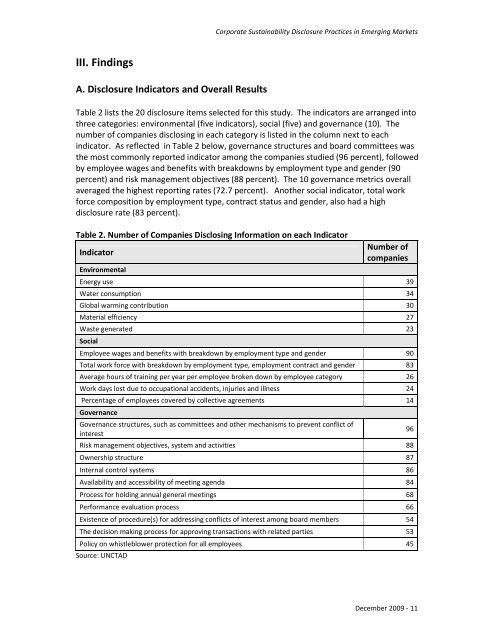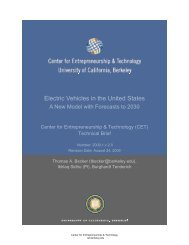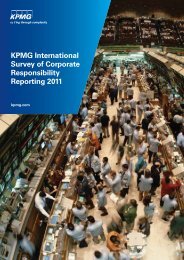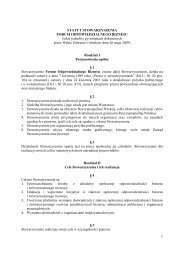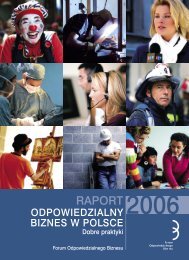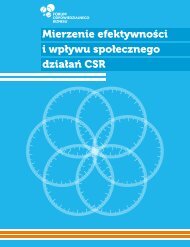Corporate Sustainability Disclosure in Emerging Markets
Corporate Sustainability Disclosure in Emerging Markets
Corporate Sustainability Disclosure in Emerging Markets
You also want an ePaper? Increase the reach of your titles
YUMPU automatically turns print PDFs into web optimized ePapers that Google loves.
<strong>Corporate</strong> <strong>Susta<strong>in</strong>ability</strong> <strong>Disclosure</strong> Practices <strong>in</strong> Emerg<strong>in</strong>g <strong>Markets</strong>III. F<strong>in</strong>d<strong>in</strong>gsA. <strong>Disclosure</strong> Indicators and Overall ResultsTable 2 lists the 20 disclosure items selected for this study. The <strong>in</strong>dicators are arranged <strong>in</strong>tothree categories: environmental (five <strong>in</strong>dicators), social (five) and governance (10). Thenumber of companies disclos<strong>in</strong>g <strong>in</strong> each category is listed <strong>in</strong> the column next to each<strong>in</strong>dicator. As reflected <strong>in</strong> Table 2 below, governance structures and board committees wasthe most commonly reported <strong>in</strong>dicator among the companies studied (96 percent), followedby employee wages and benefits with breakdowns by employment type and gender (90percent) and risk management objectives (88 percent). The 10 governance metrics overallaveraged the highest report<strong>in</strong>g rates (72.7 percent). Another social <strong>in</strong>dicator, total workforce composition by employment type, contract status and gender, also had a highdisclosure rate (83 percent).Table 2. Number of Companies Disclos<strong>in</strong>g Information on each IndicatorIndicatorEnvironmentalNumber ofcompaniesEnergy use 39Water consumption 34Global warm<strong>in</strong>g contribution 30Material efficiency 27Waste generated 23SocialEmployee wages and benefits with breakdown by employment type and gender 90Total work force with breakdown by employment type, employment contract and gender 83Average hours of tra<strong>in</strong><strong>in</strong>g per year per employee broken down by employee category 26Work days lost due to occupational accidents, <strong>in</strong>juries and illness 24Percentage of employees covered by collective agreements 14GovernanceGovernance structures, such as committees and other mechanisms to prevent conflict of<strong>in</strong>terestRisk management objectives, system and activities 88Ownership structure 87Internal control systems 86Availability and accessibility of meet<strong>in</strong>g agenda 84Process for hold<strong>in</strong>g annual general meet<strong>in</strong>gs 68Performance evaluation process 66Existence of procedure(s) for address<strong>in</strong>g conflicts of <strong>in</strong>terest among board members 54The decision mak<strong>in</strong>g process for approv<strong>in</strong>g transactions with related parties 53Policy on whistleblower protection for all employees 45Source: UNCTAD96December 2009 - 11


